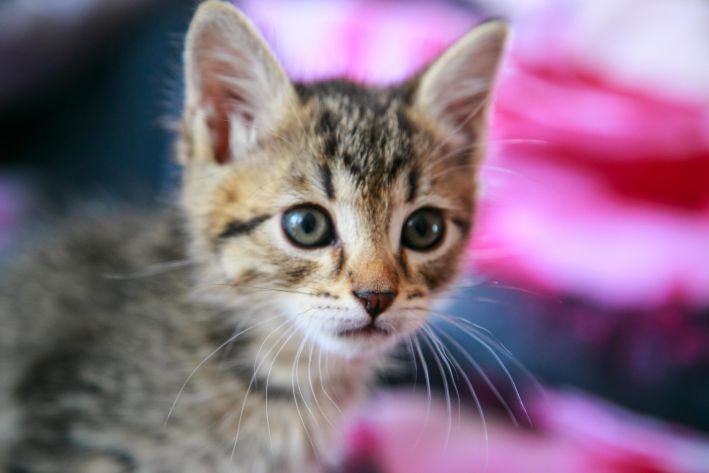Why Does a Cat Rub Its Face on Everything: 12 Reasons You Should Know
This behavior, which may seem strange at first glance, is actually an important part of cat body language and communication.
In this article, we'll dive into the world of cat instincts and social cues to understand why cats rub their faces on everything and what they're trying to communicate.
Marks with smell
Due to the presence of scent glands on their faces, cats usually rub against objects and people to leave their scent. This act of head rubbing is done to mark their territory.
Showing affection
Just as they sniff people, cats may rub their faces against them as a sign of affection.
Cats express their love through physical contact, so the action can usually be accompanied by kneading with paws.

Attention seeking
Depending on the cat's personality and preferences, rubbing the face can also be a way for the cat to get attention. It may be asking the person to pet it or feed it.
Be sure to give your cat lots of attention and love when she rubs her face.
Communication
Cats communicate through body language, and rubbing their faces against objects or people can be a way of expressing themselves. They can also experience a variety of emotions, such as happiness, contentment, or excitement, and this action allows them to show it.
Social connections
Despite their reputation, cats are actually sociable creatures. They can communicate and bond with people and other animals.
Rubbing your face against another cat or person can also serve as a way to strengthen social bonds, providing a sense of closeness and comfort with each other.
Ownership
In addition to being territorial, cats can also be possessive of objects. They may rub their muzzles against objects they consider theirs.
When cats are stressed, they tend to seek out places or objects with their scent to calm themselves down.
Mark safe places
Cats find comfort and security in places and objects with familiar smells. They may rub their faces against objects to mark places they find safe or comfortable, such as a favorite sleeping spot or hiding place.
Self-care
Grooming is part of a typical cat's daily routine, and they often spend hours grooming themselves.
Rubbing your cat's muzzle against objects can help clean it by removing dirt, debris, and excess fur.
Stress relief
Cats are creatures of habit. Any changes in their environment can easily cause them stress, such as rearranging furniture, getting a new pet, or even loneliness.
Rubbing their faces against objects can also be a way for cats to relieve stress or anxiety, as physical contact and familiar smells can have a calming effect.
If your cat is rubbing its face against you and there are other signs of stress, give it attention, affection, and reassurance, and remove the source of stress to help it relax.
Studying the surrounding environment
Cats have a highly developed sense of smell. Rubbing their muzzles against objects allows them to explore and gather information about their surroundings by picking up scents.
Cats will also rub against people and other pets to not only leave their scents but also to collect them.
Timestamps
Territorial marking is a way for cats to let others know they have been there.
In addition to leaving their mark, cats can also determine how long it has been since another cat was present in the area using time marks.
This involves determining the age of the label by how fresh or strong the scent remains.
A relatively fresh scent will mean that the cat has just left its mark and may still be nearby, while a weaker scent will mean that the cat has been gone for quite some time.
Playful mood
All cats have unique behavior, personalities, and habits. While a cat may rub its face against objects for certain purposes, sometimes it may not.
Cats are playful creatures, and rubbing their faces against objects or people may simply be a form of play or entertainment.
Earlier we wrote about why a cat sits like a human.
